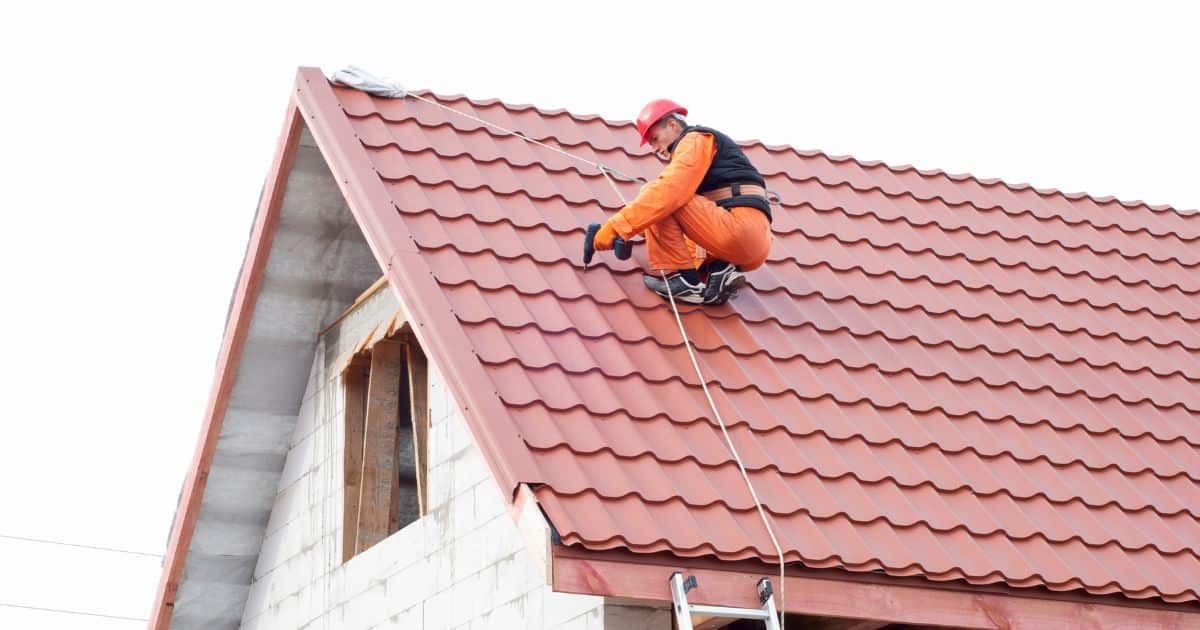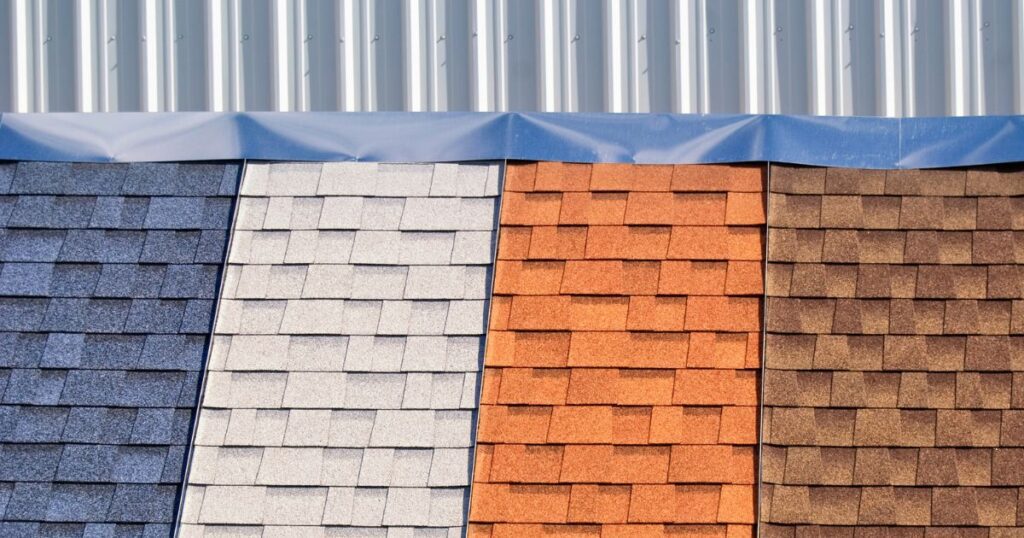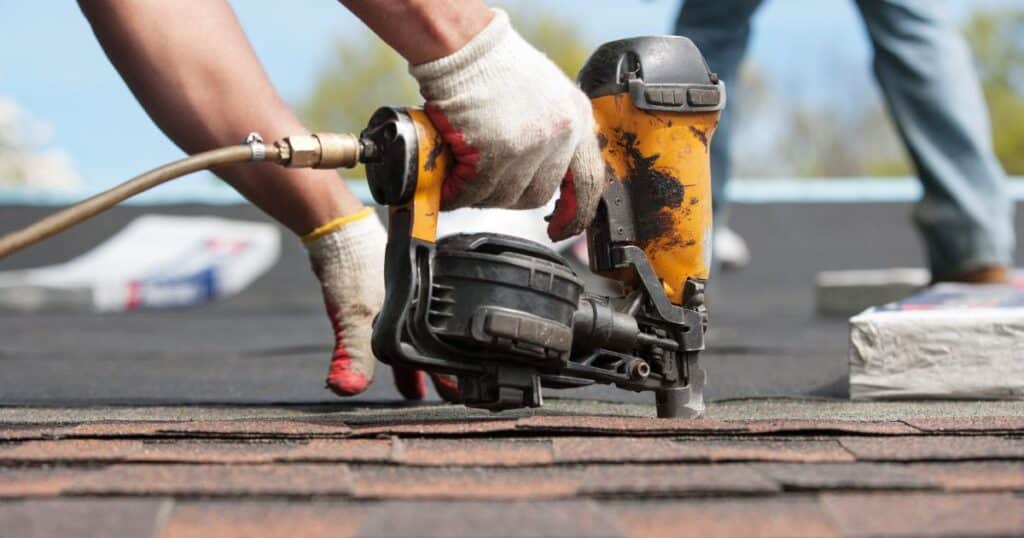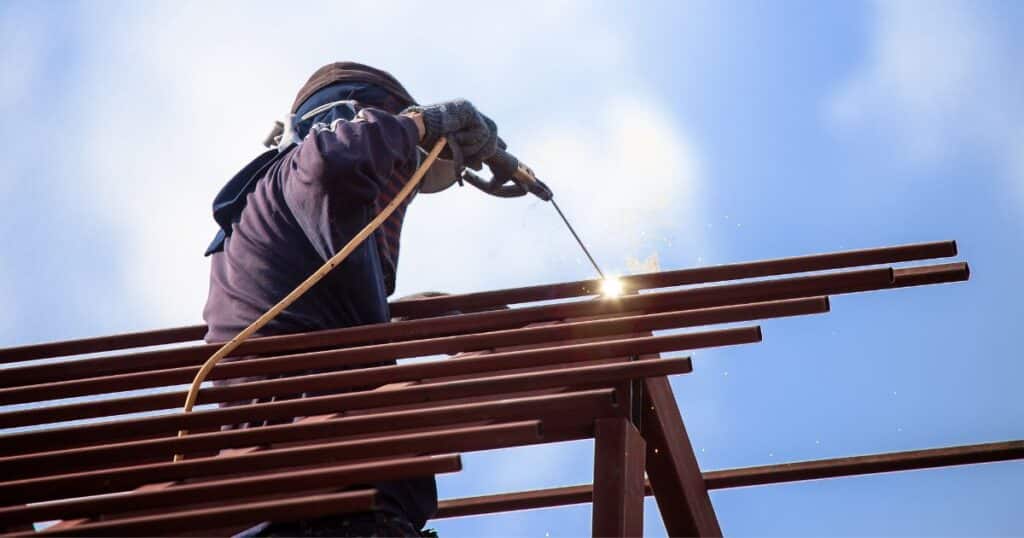
Cool roofs are the new cool in town! With their sustainable and energy-efficient nature, they’re becoming all the rage. These roofs don’t just save you money on cooling costs, but they also give Mother Earth a big high-five by combating the urban heat island effect. You see, traditional roofs soak up heat like a sponge during the day and release it at night, turning cities into steamy saunas. But cool roofs? They’re like reflective superstars, bouncing sunlight away and keeping surface temperatures low. What is the best kind of roofing?
The best kind of roofing depends on various factors such as climate, budget, durability, and aesthetics. Common options include asphalt shingles, metal roofing, clay or concrete tiles, and slate. It’s crucial to consider your specific needs and consult with a professional roofer to determine the most suitable kind of roofing for your home.
What Is The Best Kind of Roofing?
Let’s face it; the roof is one of the most important parts of any structure. It protects the building and everything in it from external elements such as rain, snow, hail, and extreme heat. Thus, having a good roof installed can spare you from countless troubles and expenses that might arise from a faulty one.
It’s not just about keeping you dry during a storm; a good roof also ensures that your home is structurally sound and maintains its value over time. A well-maintained roof can even increase the resale value of your home in the future.
Brief Overview of Different Types of Roofing
When it comes to roofing materials, there are many types to choose from. Some popular options include asphalt shingles, metal roofs, tile roofs, slate roofs, and green roofs. Asphalt shingles have been widely used for decades due to their affordability and easy installation process.
Metal roofing materials are also gaining popularity due to their durability and energy efficiency. Tile roofing provides excellent insulation while also giving structures an eye-catching aesthetic appeal.
Slate roofing is known for its longevity and ability to withstand harsh weather conditions. Green roofs have become increasingly popular due to their environmentally friendly benefits such as reducing energy consumption and absorbing rainwater runoff.
Each type of roofing material has its benefits and drawbacks that homeowners should consider before making a decision on which one to install for their homes or buildings. In the following sections we’ll delve into each specific category in detail so that you can make an informed decision on what’s best for your needs!
Durability: Metal Roofing Reigns Supreme
When it comes to durability, there’s no question that metal roofing takes the cake. Unlike asphalt shingles or tile, metal roofs are resistant to both high winds and impacts from hail or falling branches.
They also have a longer lifespan than most other roofing materials, with some lasting up to 50 years or more. Of course, there are factors that can affect the durability of any roof, regardless of the material used.
Extreme weather conditions – such as heavy rain, snow, and wind – can take a toll on even the strongest of roofs over time. Proper maintenance is also key in maximizing a roof’s lifespan; neglecting regular inspections and repairs can lead to small issues becoming major problems down the line.
But when compared side-by-side with other roofing materials like asphalt shingles or tile, metal roofing simply has the upper hand in terms of durability. While some may argue that tile is more resistant to fire damage, for example, it falls short in other areas – namely its susceptibility to cracking under impact.
RELATED: Why is Barn Roofing Taxed in Texas?
Comparison Between Different Roofing Materials
So what sets metal roofing apart from its competitors? Let’s take a closer look at how it stacks up against asphalt shingles and tile. Asphalt shingles are one of the most popular types of roofing materials due in part to their relatively low cost compared to other options.
However, they have a shorter lifespan than metal roofs (typically around 15-20 years) and tend to be more vulnerable to weather damage over time. They’re also not as eco-friendly as some other options.
Tile roofs offer a unique aesthetic appeal that can’t be replicated by other materials – but they come at a price (both literally and figuratively). Not only are they expensive upfront, but they’re also heavy and require reinforced framing in order to be installed properly.
In addition, as mentioned earlier, they’re more prone to cracking under impact. Ultimately, when it comes to choosing a roofing material that can stand up to the elements and last for decades to come, metal roofing is the clear winner.
The Winner: Metal Roofing
Sure, it may not be the cheapest option out there – but when you consider the long-term savings and peace of mind that come with knowing your roof can withstand anything Mother Nature throws its way, it’s worth the investment. Plus, with so many styles and finishes available these days (including options that mimic the look of other materials like wood or slate), you don’t have to sacrifice aesthetics for durability.
In my opinion (and I know this may be controversial), anyone who chooses a different type of roofing material over metal is simply setting themselves up for disappointment down the road. Don’t believe me?
Talk to any homeowner who’s had to replace their asphalt shingle roof twice in the same time span that a metal roof would have lasted them. Trust me – you’ll thank yourself later for making the smart choice in going with metal roofing.
Energy Efficiency: The Key to Saving Money
When it comes to roofing, there is more than just durability and aesthetics to consider. Energy efficiency plays a crucial role in reducing energy consumption and costs, making it an important factor for homeowners and business owners alike.
The type of roofing material chosen can have a significant impact on the amount of energy that is needed to maintain comfortable indoor temperatures. One way that roofing affects energy consumption is through insulation.
Insulation helps keep your home or building cool in the summer and warm in the winter by reducing heat transfer between the interior and exterior environments. Two common types of insulation are fiberglass and spray foam.
Fiberglass insulation is made up of tiny glass fibers that trap air pockets, providing good thermal performance at a relatively low cost. Spray foam insulation, on the other hand, is a more expensive option that provides superior insulation by filling gaps and cracks with expanding foam.
Comparison: Fiberglass vs Spray Foam Insulation
When it comes to choosing between fiberglass and spray foam insulation for your roof, there are several factors to consider. Firstly, fiberglass is generally cheaper than spray foam, making it a popular choice for homeowners on a budget.
However, spray foam has better insulating properties due to its ability to fill gaps and cracks more effectively than fiberglass. Another advantage of spray foam over fiberglass is its ability to resist moisture buildup.
Fiberglass can absorb moisture over time which makes it less effective as an insulator when wet. Moisture buildup can also lead to mold growth which can be harmful to your health if left unchecked.
The winner in terms of energy efficiency? Cool roofs!
These roofs are designed with reflective materials that reflect sunlight away from the building instead of absorbing it like traditional dark-colored roofs do. This means that less heat enters the building through the roof, reducing cooling costs during hot summer months.
Cool Roofs: A Wise Choice for the Environment and Your Wallet
Cool roofs are the new cool in town! With their sustainable and energy-efficient nature, they’re becoming all the rage. These roofs don’t just save you money on cooling costs, but they also give Mother Earth a big high-five by combating the urban heat island effect. You see, traditional roofs soak up heat like a sponge during the day and release it at night, turning cities into steamy saunas.
But cool roofs? They’re like reflective superstars, bouncing sunlight away and keeping surface temperatures low. Say goodbye to scorching summers and hello to lower energy consumption. It’s a win-win situation for your wallet and the environment. So why settle for the same old roof when you can be cool and make a difference?
Ah, the eternal quest for the perfect roof! It’s a journey filled with excitement, uncertainty, and a dash of confusion. So many choices, so many materials, but fear not, dear reader, for we are about to unveil the secrets of the roofing kingdom and crown the ultimate champion. Get ready to be enthralled, for in this whimsical adventure, we will explore the fascinating world of roofs, from the sturdiest fortresses to the trendiest crowns. Whether you seek the durability of a titan or the elegance of a unicorn’s mane, rest assured, we have the answers you’ve been pining for. So grab a cup of curiosity and prepare to be swept away, as we embark on an extraordinary journey to discover the best kind of roofing. Trust us, the view from the top is truly magnificent!
Aesthetics
The Importance of a Beautiful Roof
When it comes to the overall look of your house or building, the roof plays a crucial role. It is the crown on top of your home, the finishing touch that completes the picture. A beautiful roof can make all the difference in terms of curb appeal and resale value.
Therefore, choosing a roofing material based solely on its practical features is simply not enough. The aesthetic factor must be taken into account as well.
Comparison between Different Styles and Colors
There are many options when it comes to roofing styles and colors, each with its unique features and benefits. Asphalt shingles are widely used due to their affordability, but they lack character and charm.
Metal roofing can be sleek and modern-looking but it may not fit with every architectural style. When it comes to aesthetics, my personal favorite roofing material is slate.
It has a timeless appeal that suits both traditional and contemporary homes alike. The natural variations in color give slate roofs a unique beauty that cannot be replicated by man-made materials or painted roofs.
While some may argue that slate is too expensive compared to other types of roofing, I believe that investing in quality materials pays off in the long run. A slate roof can last for over 100 years with proper maintenance, making it a wise investment for homeowners who plan on staying put.
The Winner: Slate Roofing
In my opinion, there is no doubt that slate roofing takes the cake when it comes to aesthetics. Its durability combined with its beauty make it an unparalleled choice for those looking for high-quality roofing materials.
Of course, personal preferences vary from person to person – some may prefer the clean lines of metal roofs while others may opt for more colorful options like clay tiles or cedar shakes. However, if you’re looking for a classic look that will stand the test of time, slate is the clear winner.
Environmental Impact
The production and disposal of roofing materials have a significant impact on the environment. The manufacturing process for traditional asphalt shingles, for example, involves the use of fossil fuels and emits harmful greenhouse gases.
Additionally, when these shingles are disposed of, they can take centuries to decompose in landfills. This means that when it comes to roofing materials, we need to consider the environmental impact at every stage of their lifecycle.
Comparison between eco-friendly options (e.g. recycled shingles, solar panels)
There are several eco-friendly options available today that can help reduce the environmental impact of your roof. One such option is recycled shingles made from post-consumer waste such as plastic bottles or rubber tires. These shingles offer a durable and cost-effective alternative to traditional asphalt shingles while also reducing waste in landfills.
Solar panels are another green option for roofing that can help reduce your carbon footprint by producing clean energy from the sun. While solar panels may be more expensive upfront than other roofing materials, they have the potential to save you money on energy bills over time and contribute towards a greener planet.
The winner: green roofs
When it comes to environmentally friendly roofing options, there is one clear winner: green roofs. A green roof is essentially a living roof covered in vegetation that provides several benefits for both your home and the environment at large.
Firstly, green roofs help to reduce stormwater runoff by absorbing rainwater and releasing it slowly back into the atmosphere. This helps prevent flooding and erosion while also reducing strain on local water treatment systems.
In addition, green roofs provide natural insulation which can help regulate indoor temperatures all year round. This means lower heating and cooling costs for you as well as reduced energy consumption overall.
Green roofs provide habitat for birds and insects while also improving air quality by absorbing carbon dioxide and producing oxygen. With so many benefits, it’s no wonder that green roofs are becoming increasingly popular among environmentally conscious homeowners.
RELATED: When Is Roofing Season Slow In Dallas 2023
Cost-Effectiveness: Why Asphalt Shingles Are the Best Choice
When it comes to cost-effectiveness, the clear winner is asphalt shingles. While it may not be as durable or eco-friendly as other options out there, asphalt shingles are undoubtedly the most affordable roofing material available on the market today. This is because they are easy to produce, install, and maintain – all factors that contribute to their low price point.
One of the most significant factors affecting the cost of a new roof is the materials used. For example, metal roofing may be more durable and resistant to harsh weather conditions than asphalt shingles, but it also costs significantly more.
Additionally, while labor costs can vary depending on location and other factors, installing asphalt shingles tends to be less time-consuming and therefore less expensive than other types of roofing. In terms of longevity, asphalt shingles have come a long way in recent years.
Although they may not last as long as metal or tile roofs, modern advancements have made them more durable than ever before. With proper care and maintenance (such as regular cleaning and inspections), an asphalt shingle roof can last anywhere from 15-30 years – a respectable lifespan for such an affordable option.
Why Other Options Don’t Measure Up
While there are certainly other types of roofing that offer benefits such as increased durability or eco-friendliness, these advantages often come with a hefty price tag attached. For example, while metal roofs offer excellent durability and impact resistance thanks to their high tensile strength and interlocking panels, they can cost up to three times as much as an asphalt shingle roof.
Similarly, while slate roofs offer unparalleled beauty and longevity (some slate roofs can last up to 150 years!), they are also one of the most expensive options available due to their weight and difficulty in installation. Even tile roofs fall short when compared with asphalt shingles in terms of cost-effectiveness – while they are certainly durable and fire-resistant, they can be fragile and difficult to repair.
Conclusion: Why Asphalt Shingles Are the Best Choice for Your Wallet
While there are certainly other roofing options out there that offer advantages such as increased durability or eco-friendliness, none can compete with the affordability of asphalt shingles. With a wide range of colors and styles available to choose from, homeowners don’t have to sacrifice aesthetics for cost-effectiveness either. Ultimately, when it comes to choosing a new roof for your home or business, it’s important to weigh the pros and cons of each option carefully.
While some may be more expensive upfront, they may also save you money in the long run due to their increased longevity or energy efficiency. However, if you’re looking for an affordable option that won’t break the bank but will still provide adequate protection against the elements, asphalt shingles are undoubtedly your best bet.
Frequently Asked Questions
What type of roofing lasts the longest?
The type of roofing that tends to last the longest is typically metal roofing, which can have a lifespan of 40-70 years or more, depending on the specific material and maintenance.
What type of roof is most efficient?
The most efficient type of roof is generally considered to be cool roofs, which are designed to reflect sunlight and reduce heat absorption, resulting in lower energy consumption for cooling.
What is the most popular type of roof?
The most popular type of roof can vary depending on the region and individual preferences, but commonly used options include asphalt shingles, metal roofs, and concrete tiles.
Which roof is best for hot climate?
For hot climates, roofs with good insulation and reflective properties are recommended. Cool roofs, made of materials that reflect sunlight and reduce heat absorption, are often a suitable choice.
What is the most cost effective roof material?
Asphalt shingles are generally considered the most cost-effective roof material due to their relatively low installation and maintenance costs.
What type of roofing is cheapest?
Among commonly used roofing materials, asphalt shingles are generally the cheapest option in terms of upfront costs. However, long-term costs should also be considered, as durability and maintenance requirements can impact overall expenses.
Conclusion
Recap on the Best Type(s) of Roofing for Each Category Discussed
To recap, we have discussed five categories that are important when considering what is the best kind of roofing. For durability, metal roofing reigns supreme due to its ability to withstand severe weather conditions and require minimal maintenance.
For energy efficiency, cool roofs are the clear winner as they reflect sunlight and help lower energy consumption and costs. When it comes to aesthetics, slate roofing is unmatched in its stylish appearance and timeless beauty.
In terms of environmental impact, green roofs take the cake with their eco-friendly materials and ability to improve air quality. For cost-effectiveness, asphalt shingles are your best bet as they offer a balance between affordability and longevity.
A Final Emphasis on Prioritizing Quality Over Cost
It’s crucial to note that while cost is undoubtedly a significant factor when it comes to choosing the right roofing material for your home or building, prioritizing quality over cost is paramount in ensuring long-term satisfaction with your investment. Cutting corners with cheaper materials may save you money initially but could end up costing you more in repairs or replacement down the line. Selecting the best kind of roofing requires careful consideration of various factors such as durability, energy efficiency, aesthetics, environmental impact, and cost-effectiveness.
Ultimately it’s essential to prioritize quality over cost when making this important decision. By weighing these factors carefully and consulting with professionals in the industry can help ensure that you make an informed choice that suits your needs while also providing peace of mind for years to come.





